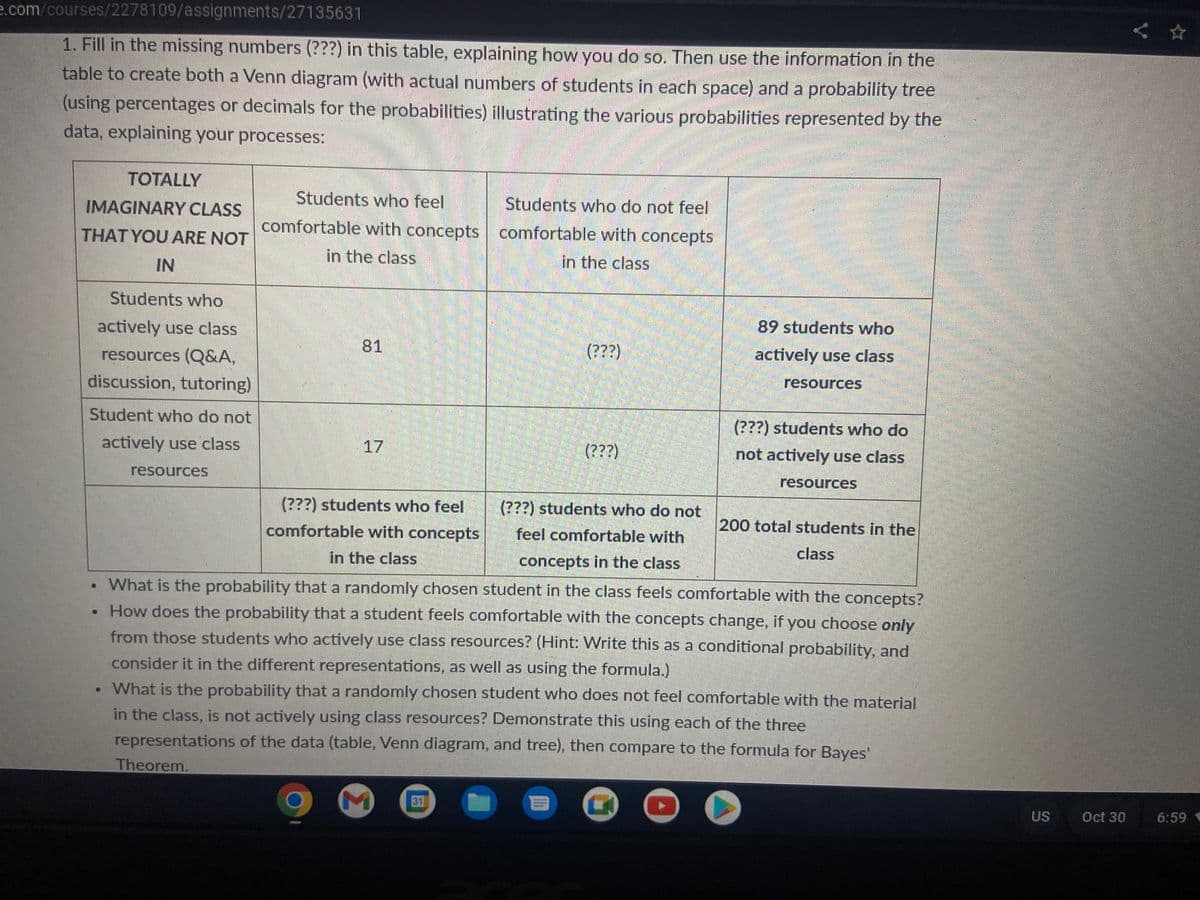I'm asking for help on #1 and the bullet points that follow it.
Chapter9: Sequences, Probability And Counting Theory
Section9.7: Probability
Problem 5SE: The union of two sets is defined as a set of elements that are present in at least one of the sets....
Related questions
Question
I'm asking for help on #1 and the bullet points that follow it.

Transcribed Image Text:e.com/courses/2278109/assignments/27135631
1. Fill in the missing numbers (???) in this table, explaining how you do so. Then use the information in the
table to create both a Venn diagram (with actual numbers of students in each space) and a probability tree
(using percentages or decimals for the probabilities) illustrating the various probabilities represented by the
data, explaining your processes:
TOTALLY
IMAGINARY CLASS
THAT YOU ARE NOT
IN
Students who
actively use class
resources (Q&A,
discussion, tutoring)
Student who do not
actively use class.
resources
Students who feel
comfortable with concepts
in the class
81
(???) students who feel
comfortable with concepts
in the class
Students who do not feel
comfortable with concepts
in the class
31
(???)
(???)
(???) students who do not
feel comfortable with
concepts in the class
89 students who
actively use class
resources
(???) students who do
not actively use class
resources
200 total students in the
class
What is the probability that a randomly chosen student in the class feels comfortable with the concepts?
• How does the probability that a student feels comfortable with the concepts change, if you choose only
from those students who actively use class resources? (Hint: Write this as a conditional probability, and
consider it in the different representations, as well as using the formula.)
• What is the probability that a randomly chosen student who does not feel comfortable with the material
in the class, is not actively using class resources? Demonstrate this using each of the three
representations of the data (table, Venn diagram, and tree), then compare to the formula for Bayes'
Theorem.
M
US
Oct 30
< ✩
6:59
Expert Solution
This question has been solved!
Explore an expertly crafted, step-by-step solution for a thorough understanding of key concepts.
Step by step
Solved in 2 steps

Recommended textbooks for you



Algebra & Trigonometry with Analytic Geometry
Algebra
ISBN:
9781133382119
Author:
Swokowski
Publisher:
Cengage



Algebra & Trigonometry with Analytic Geometry
Algebra
ISBN:
9781133382119
Author:
Swokowski
Publisher:
Cengage